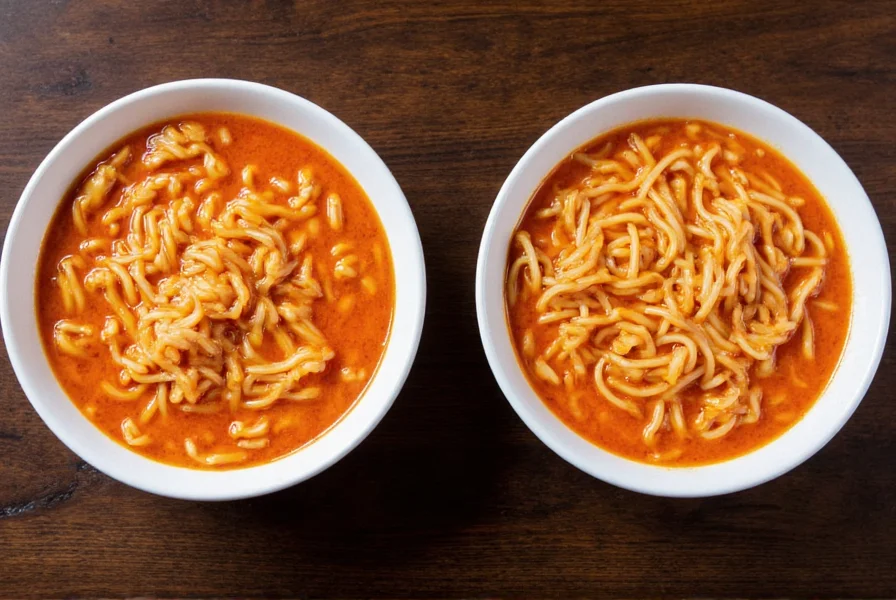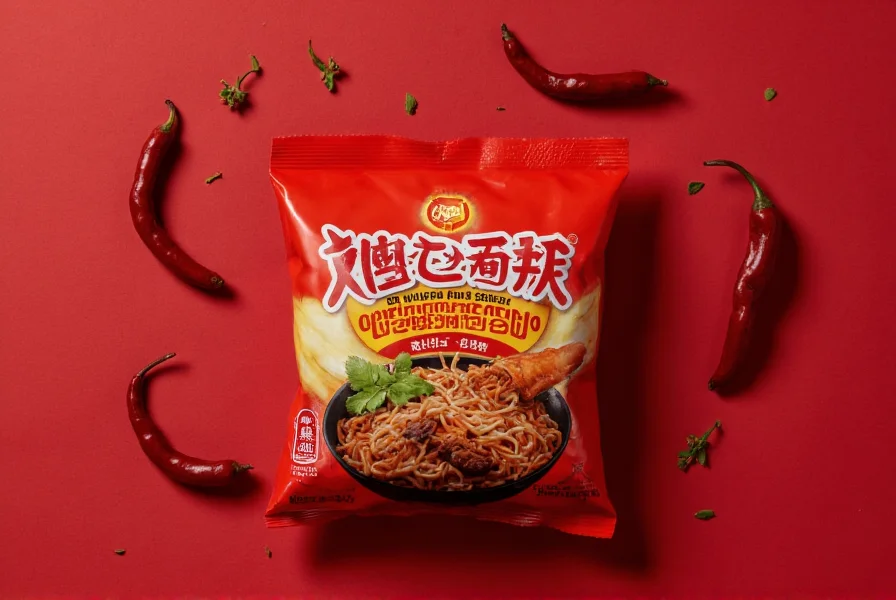For spice enthusiasts seeking extreme culinary experiences, ghost pepper ramen represents the frontier of fiery instant noodles. This specialty product combines traditional Japanese ramen with Bhut Jolokia peppers, creating an eating experience that demands respect and preparation. Understanding the science behind its heat level and proper consumption techniques is essential for anyone considering this intense food challenge.
The Science Behind Ghost Pepper Heat
Ghost peppers (Bhut Jolokia) earned their place in the ghost pepper ramen heat level discussion when they were officially measured at over 1 million Scoville units in 2007. The capsaicin concentration in these peppers creates an intense burning sensation that affects not just the mouth but can trigger physiological responses throughout the body. When incorporated into ramen broth, the capsaicin becomes evenly distributed, making every spoonful consistently fiery.
Unlike milder spicy ramen varieties that use standard chili flakes or sauces, authentic ghost pepper ramen products typically use ghost pepper powder or oil extract to achieve their signature heat. The manufacturing process requires specialized equipment and safety protocols to protect workers from the pepper's volatile oils.
Ghost Pepper Ramen Heat Comparison Chart
| Spicy Food Product | Scoville Heat Units | Ghost Pepper Ramen Equivalent |
|---|---|---|
| Standard Spicy Ramen | 5,000-15,000 | 1/50th the heat |
| Jalapeño Pepper | 2,500-8,000 | 1/100th the heat |
| Ghost Pepper Ramen | 800,000-1,000,000 | 1x baseline |
| Carolina Reaper | 1,400,000-2,200,000 | 1.5-2x hotter |
Safety Considerations for Consumption
Before attempting ghost pepper ramen safety tips, understand that this isn't ordinary spicy food. The intense capsaicin concentration can cause:
- Temporary respiratory distress
- Sweating and increased heart rate
- Nausea in spice-sensitive individuals
- Skin irritation if handling the dry seasoning
Medical professionals advise against consuming ghost pepper products if you have gastrointestinal conditions, heart issues, or are pregnant. Always have dairy products like milk or yogurt nearby to neutralize the capsaicin, as water will only spread the burning sensation.
How to Enjoy Ghost Pepper Ramen Responsibly
For those determined to try this extreme culinary experience, follow these guidelines for ghost pepper ramen preparation guide:
- Start with a small portion - don't consume the entire serving immediately
- Have dairy products readily available (milk, yogurt, ice cream)
- Avoid touching your face during consumption
- Eat with a companion in case you need assistance
- Don't eat on an empty stomach
- Build up to it with progressively spicier foods if you're new to extreme heat

Finding Authentic Ghost Pepper Ramen Products
When searching for where to buy ghost pepper ramen, look for these indicators of quality:
- Clear labeling of Scoville heat units
- Reputable specialty food manufacturers
- Transparent ingredient lists
- Proper safety warnings on packaging
Many authentic products come from Japanese or Korean specialty food producers who have experience with extreme spice levels. Avoid unbranded or suspiciously cheap versions that may use inconsistent pepper concentrations or artificial heat enhancers.
Ghost Pepper Ramen vs Regular Spicy Ramen
The difference between ghost pepper ramen vs regular ramen goes beyond mere heat measurement. Traditional spicy ramen uses moderate chili varieties that provide warmth and flavor complexity, while ghost pepper ramen focuses primarily on the extreme heat experience. The flavor profile becomes secondary to the physiological reaction, with many consumers reporting that the intense burn overwhelms other taste sensations.
Food scientists note that at extreme Scoville levels, capsaicin triggers pain receptors rather than just taste receptors, creating a fundamentally different eating experience. This explains why many ghost pepper ramen consumers report physical reactions like sweating, tearing eyes, and flushed skin - responses rarely seen with standard spicy foods.

Responsible Consumption Guidelines
Understanding proper ghost pepper ramen consumption guidelines ensures you enjoy this extreme food experience safely. Start with half the seasoning packet, gradually increasing as your tolerance develops. Never consume multiple servings in one sitting, and avoid combining with alcohol which can intensify the burning sensation.
Many specialty food retailers now offer "ghost pepper ramen challenge" kits that include the noodles plus appropriate dairy products and safety instructions. These curated experiences provide a more controlled environment for first-time consumers compared to purchasing the product individually.
Frequently Asked Questions
How long does the burning sensation from ghost pepper ramen last?
The intense burning sensation typically lasts 30-60 minutes for most people, though residual effects can persist for several hours. Consuming dairy products significantly reduces the duration by binding with capsaicin molecules.
Can ghost pepper ramen cause permanent damage?
When consumed responsibly, ghost pepper ramen doesn't cause permanent damage. However, excessive consumption can lead to temporary gastrointestinal distress. Individuals with pre-existing stomach conditions should avoid extremely spicy foods.
What's the best way to neutralize ghost pepper heat?
Dairy products containing casein (milk, yogurt, cheese) are most effective at neutralizing capsaicin. Start with small sips of whole milk rather than gulping large amounts, which could cause discomfort. Avoid water as it spreads the oil-based capsaicin.
Is ghost pepper ramen suitable for children?
No, ghost pepper ramen is not appropriate for children due to their lower spice tolerance and developing digestive systems. Most manufacturers explicitly state their products are for adults 18+ only. Even teenagers should avoid extreme spicy foods.
How should I store unused ghost pepper seasoning packets?
Store unused seasoning packets in airtight containers away from moisture. Keep them separate from other foods and clearly labeled. Consider storing in a dedicated spice cabinet with warning labels to prevent accidental use in regular cooking.











 浙公网安备
33010002000092号
浙公网安备
33010002000092号 浙B2-20120091-4
浙B2-20120091-4